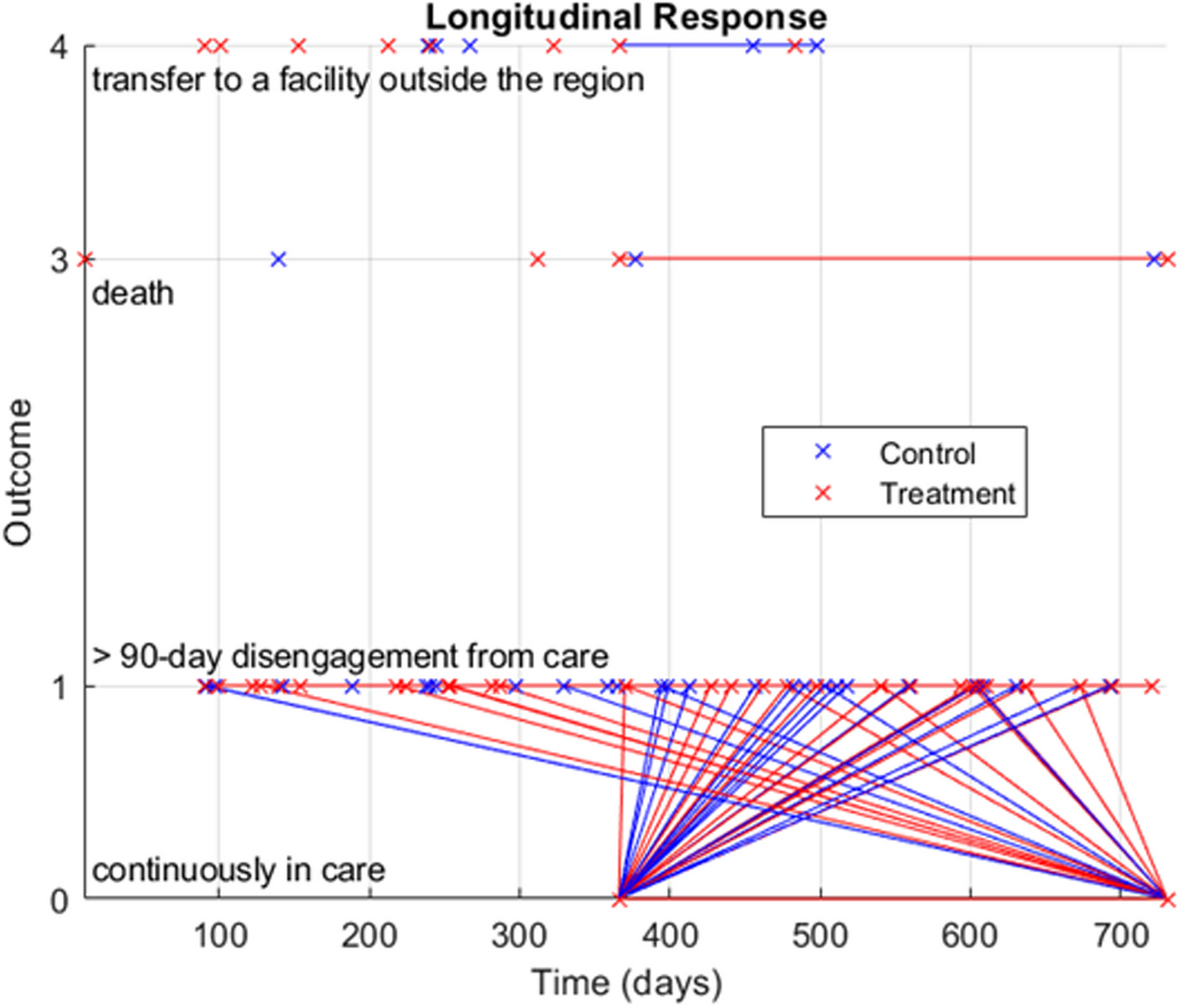
Akello KO, Ogendi J, Asweto CO. The role of knowledge and attitude on HIV and Aids prevention practices among secondary school students: a cross-sectional study of Gwassi south sub-county, Homa Bay county, Kenya. medRxiv, 2023–01. 2023.
Alosh M, Huque MF, Bretz F, D’Agostino RB Sr. Tutorial on statistical considerations on subgroup analysis in confirmatory clinical trials. Stat Med. 2016;36(8):1334–60.
Ammon N, Mason S, Corkery JM. Factors impacting antiretroviral therapy adherence among human immunodeficiency virus–positive adolescents in Sub-Saharan Africa: a systematic review. Public Health. 2018;157:20–31.
Amornkul PN, et al. HIV prevalence and associated risk factors among individuals aged 13–34 years in Rural Western Kenya. PLoS ONE. 2009;4(7):e6470.
Bendavid E. Past and Future Performance: PEPFAR in the Landscape of Foreign Aid for Health. Curr HIV/AIDS Rep. 2016;13(5):256–62. https://doi.org/10.1007/s11904-016-0326-8.
Bendavid E, Bhattacharya J. The President’s Emergency Plan for AIDS Relief in Africa: an evaluation of outcomes. Ann Intern Med. 2009;150(10):688–95. https://doi.org/10.7326/0003-4819-150-10-200905190-00117.
Bendavid E, Holmes CB, Bhattacharya J, Miller G. HIV development assistance and adult mortality in Africa. JAMA. 2012;307(19):2060–7. https://doi.org/10.1001/jama.2012.2001.
Beres LK, et al. Patterns and predictors of incident return to hiv care among traced, disengaged patients in Zambia: analysis of a prospective cohort. J Acquir Immune Defici Syndr (1999). 2021;86(3):313–22. https://doi.org/10.1097/QAI.0000000000002554.
Chang A. Qualitative analysis of the intersection of HIV and socioeconomic factors impacting community health on Mfangano Island, Lake Victoria Region, Kenya. 2013.
Chenneville T, Drake H. Gender Differences in Psychosocial Predictors of Sexual Activity and HIV Testing Among Youth in Kenya. Front Reprod Health. 2021;3:636462.
Christensen R, Bours MJ, Nielsen SM. Effect modifiers and statistical tests for interaction in randomized trials. J Clin Epidemiol. 2021;134:174–7.
Corneille MA, Zyzniewski LE, Belgrave FZ. Age and HIV risk and protective behaviors among African American women. J Black Psychol. 2008;34(2):217–33.
Ding EL. et al. (2013, December). Randomized trial of social network lifestyle intervention for obesity: Microclinic intervention results and 16-month follow-up. In Circulation (Vol. 128, No. 24, pp. 2706–2706). 530 Walnut st, Philadelphia, PA 19106–3621 USA: Lippincott Williams & Wilkins.
Ding EL, et al. Social induction via a social behavioral intervention on changes in metabolic risk factors: a randomized controlled trial in Rural Appalachia. In Press (Mayo Clinic Proceedings). 2024.
Ding EL, Feigl AB, Watson KT, Ng TLJ, Makerechi L, Bui N, Ireifij A, Farraj R, Zoughbie DE. Social network enhanced behavioral interventions for diabetes and obesity: A 3 arm randomized trial with 2 years follow-up in Jordan. PLOS Glob Public Health. 2024;4(3):e0001514. https://doi.org/10.1371/journal.pgph.0001514. PMID:38507441;PMCID:PMC10954161.
Earnshaw VA, Smith LR, Chaudoir SR, Amico KR, Copenhaver MM. HIV stigma mechanisms and well-being among PLWH: a test of the HIV stigma framework. AIDS Behav. 2013;17:1785–95.
El Bouzidi K, et al. Disengagement from HIV care and failure of second-line therapy in Nigeria: a retrospective cohort study, 2005–2017. J Acquir Immune Defic Syndr. 2022;90(1):88–96. https://doi.org/10.1097/QAI.0000000000002918.
Enane LA, et al. “I just keep quiet about it and act as if everything is alright” – The cascade from trauma to disengagement among adolescents living with HIV in western Kenya. J Int AIDS Soc. 2021;24(4):e25695. https://doi.org/10.1002/jia2.25695.
Fang L, Chuang DM, Al-Raes M. Social support, mental health needs, and HIV risk behaviors: a gender-specific, correlation study. BMC Public Health. 2019;19:1–8.
Fiorella KJ, et al. Transactional fish-for-sex relationships amid declining fish access in Kenya. World Dev. 2015;74:323–32.
Food and Drug Administration. Evaluation of sex-specific data in medical device clinical studies- Guidance for industry and food and drug administration staff. Rockville: United States Food and Drug Administration (FDA); 2014.
Gardner EM, McLees MP, Steiner JF, Del Rio C, Burman WJ. The spectrum of engagement in HIV care and its relevance to test-and-treat strategies for prevention of HIV infection. Clinical infectious diseases: an official publication of the Infectious Diseases Society of America. 2011;52(6):793–800. https://doi.org/10.1093/cid/ciq243.
Gates B. Opinion | Pepfar has made so much progress against AIDS. we can’t let up now. The Washington Post. 2023.https://www.washingtonpost.com/opinions/2023/01/28/pepfar-aids-congress-reauthorize.
Genberg BL, et al. Linkage to and engagement in HIV care in western Kenya: an observational study using population-based estimates from home-based counselling and testing. The lancet HIV. 2015;2(1):e20–6. https://doi.org/10.1016/S2352-3018(14)00034-4.
Girum T, et al. Gender disparity in epidemiological trend of HIV/AIDS infection and treatment in Ethiopia. Arch Public Health. 2018;76:51. https://doi.org/10.1186/s13690-018-0299-8.
Hedden SL, Whitaker D, Floyd L, Latimer WW. Gender differences in the prevalence and behavioral risk factors of HIV in South African drug users. AIDS Behav. 2009;13(2):288–96. https://doi.org/10.1007/s10461-008-9467-0.
Hickey MD, et al. Implementation and operational research: pulling the network together: quasiexperimental trial of a patient-defined support network intervention for promoting engagement in HIV care and medication adherence on Mfangano Island. Kenya J Acquir Immune Defic Syndr. 2015;69(4):e127–34. https://doi.org/10.1097/QAI.0000000000000664.
Hickey MD, et al. The Kanyakla study: Randomized controlled trial of a microclinic social network intervention for promoting engagement and retention in HIV care in rural western Kenya. PLoS ONE. 2021;16(9):e0255945.
Irvine MK, Robertson MM, Nash D, Kulkarni SG, Braunstein SL, Levin B. HIV Care Coordination promotes care re-engagement and viral suppression among people who have been out of HIV medical care: an observational effectiveness study using a surveillance-based contemporaneous comparison group. AIDS Res Ther. 2021;18(1):1–7.
Kimanga DO, et al. Prevalence and incidence of HIV infection, trends, and risk factors among persons aged 15–64 years in Kenya: results from a nationally representative study. J Acquir Immune Defic Syndr. 2014;66:S13–26. https://doi.org/10.1097/QAI.0000000000000124.
Kingori C, Haile ZT, Ngatia P. Depression symptoms, social support and overall health among HIV-positive individuals in Kenya. Int J STD AIDS. 2014;26(3):165–72.
Kose J, et al. Clinical outcomes among adolescents living with HIV in Kenya following initiation on antiretroviral treatment. PLOS Global Public Health. 2022;2(2):e0000094.
Krüsi A, Ranville F, Gurney L, Lyons T, Shoveller J, Shannon K. Positive sexuality: HIV disclosure, gender, violence and the law-A qualitative study. PLoS ONE. 2018;13(8):e0202776. https://doi.org/10.1371/journal.pone.0202776.
Leppink J, O’Sullivan P, Winston K. Are differences between groups different at different occasions? Perspect Med Educ. 2017;6(6):413–7. https://doi.org/10.1007/s40037-017-0380-y.
Liu P, et al. Age-treatment subgroup analyses in Cochrane intervention reviews: a meta-epidemiological study. BMC Med. 2019;17:1–11.
Longinetti E, Santacatterina M, El-Khatib Z. Gender perspective of risk factors associated with disclosure of HIV status, a cross-sectional study in Soweto, South Africa. PloS One. 2014;9(4):e95440.
Masaba R, Woelk G, Siamba S, Ndimbii J, Ouma M, Khaoya J, et al. Antiretroviral treatment failure and associated factors among people living with HIV on therapy in Homa Bay, Kenya: a retrospective study. PLOS Global Public Health. 2023;3(3):e0001007.
Mugavero MJ. Elements of the HIV care continuum: improving engagement and retention in care. Top Antivir Med. 2016;24(3):115–9.
Mwaniki SW, Kaberia PM, Mugo PM, Palanee-Phillips T. HIV prevalence and associated risk factors among young tertiary student men who have sex with men (MSM) in Nairobi, Kenya: a respondent-driven sampling survey. AIDS Res Ther. 2023;20(1):7.
Nagata JM, et al. Socio-demographic and health associations with body mass index at the time of enrollment in HIV care in Nyanza Province. Kenya AIDS care. 2013;25(12):1491–8. https://doi.org/10.1080/09540121.2013.775399.
Ojwang C, Oima D. Level of poverty among the micro enterprise owners in Homa-Bay sub county. 2018. https://repository.maseno.ac.ke/bitstream/handle/123456789/4926/28.pdf?sequence=1&isAllowed=y.
Oluoch T, et al. Correlates of HIV infection among sexually active adults in Kenya: a national population-based survey. Open AIDS J. 2011;5:125.
Omondi EO, Mbogo RW, Luboobi LS. A mathematical modelling study of HIV infection in two heterosexual age groups in Kenya. Infect Dis Model. 2019;4:83–98.
Prescott M, Zoughbie D, et al. The microclinic health program: a social network-based intervention for weight loss and diabetes risk management. In: American Journal of Epidemiology, vol. 177. Cary: Oxford Univ Press Inc; 2013. p. S96-S96.
Prevalence of HIV, female (% ages 15-24) – Kenya. World Bank Open Data. (n.d.). https://data.worldbank.org/indicator/SH.HIV.1524.FE.ZS?locations=KE.
Risher KA, et al. Age patterns of HIV incidence in eastern and southern Africa: a modelling analysis of observational population-based cohort studies. The Lancet HIV. 2021;8(7):e429–39.
Schandelmaier S, et al. Development of the Instrument to assess the Credibility of Effect Modification Analyses (ICEMAN) in randomized controlled trials and meta-analyses. CMAJ. 2020;192(32):E901–6.
Shahin YM, et al. Evaluation of the Microclinic social network model for Palestine refugees with diabetes at UNRWA health centers. J Diabetes Mellitus. 2018;8(04):99–113.
Sileo KM, Wanyenze RK, Mukasa B, Musoke W, Kiene SM. The Intersection of Inequitable Gender Norm Endorsement and HIV Stigma: Implications for HIV Care Engagement for Men in Ugandan Fishing Communities. AIDS Behav. 2021;25(9):2863–74. https://doi.org/10.1007/s10461-021-03176-1.
Swendeman D, et al. Gender disparities in depression severity and coping among people living with HIV/AIDS in Kolkata, India. PLoS One. 2018;13(11):e0207055.
Toromo JJ, et al. “I have never talked to anyone to free my mind”–challenges surrounding status disclosure to adolescents contribute to their disengagement from HIV care: a qualitative study in western Kenya. BMC Public Health. 2022;22(1):1–10.
US Food and Drug Administration. Evaluation and reporting of age-, race-, and ethnicity-specific data in medical device clinical studies. 2017. https://www.fda.gov/regulatory-information/search-fda-guidance-documents/evaluation-and-reporting-age-race-and-ethnicity-specific-data-medical-device-clinical-studies.
Wafula R, et al. Engagement in HIV care among Kenyan adults and adolescents: results from a national population-based survey. J Acquir Immune Defic Syndr. 2014;66:S98–105. https://doi.org/10.1097/QAI.0000000000000119.
Wager TD, Davidson ML, Hughes BL, Lindquist MA, Ochsner KN. Prefrontal-subcortical pathways mediating successful emotion regulation. Neuron. 2008;59(6):1037–50. https://doi.org/10.1016/j.neuron.2008.09.006.
What are HIV and AIDS? HIV.gov. (n.d.). https://www.hiv.gov/hiv-basics/overview/about-hiv-and-aids/what-are-hiv-and-aids/.
Xiao Z, Li X, Qiao S, Zhou Y, Shen Z. Coping, social support, stigma, and gender difference among people living with HIV in Guangxi, China. Psychol Health Med. 2018;23(1):18–29. https://doi.org/10.1080/13548506.2017.1300671.
Yehia BR, et al. Impact of age on retention in care and viral suppression. Journal of acquired immune deficiency syndromes (1999). 2015;68(4):413–9. https://doi.org/10.1097/QAI.0000000000000489.
Zeng C, Qiao S, Li X, Yang X, Shen Z, Zhou Y. Differential relationships of stress and HIV disclosure by gender: a person centered longitudinal study. BMC Public Health. 2021;21:1–11.
Zoughbie DE. Community-based diabetes programme: the micro-clinic project. East Mediterr Health J. 2009;15(4):1021–6.
Zoughbie DE, Watson KT, Bui N, Farraj RS, Prescott MR, Ding EL. Long-term bodyweight and glucose management effects of the Microclinic Social Network Health Behavioral Program in Amman, Jordan: 2-year results. Lancet Glob Health. 2014;2:S19.
This post was originally published on this site be sure to check out more of their content








